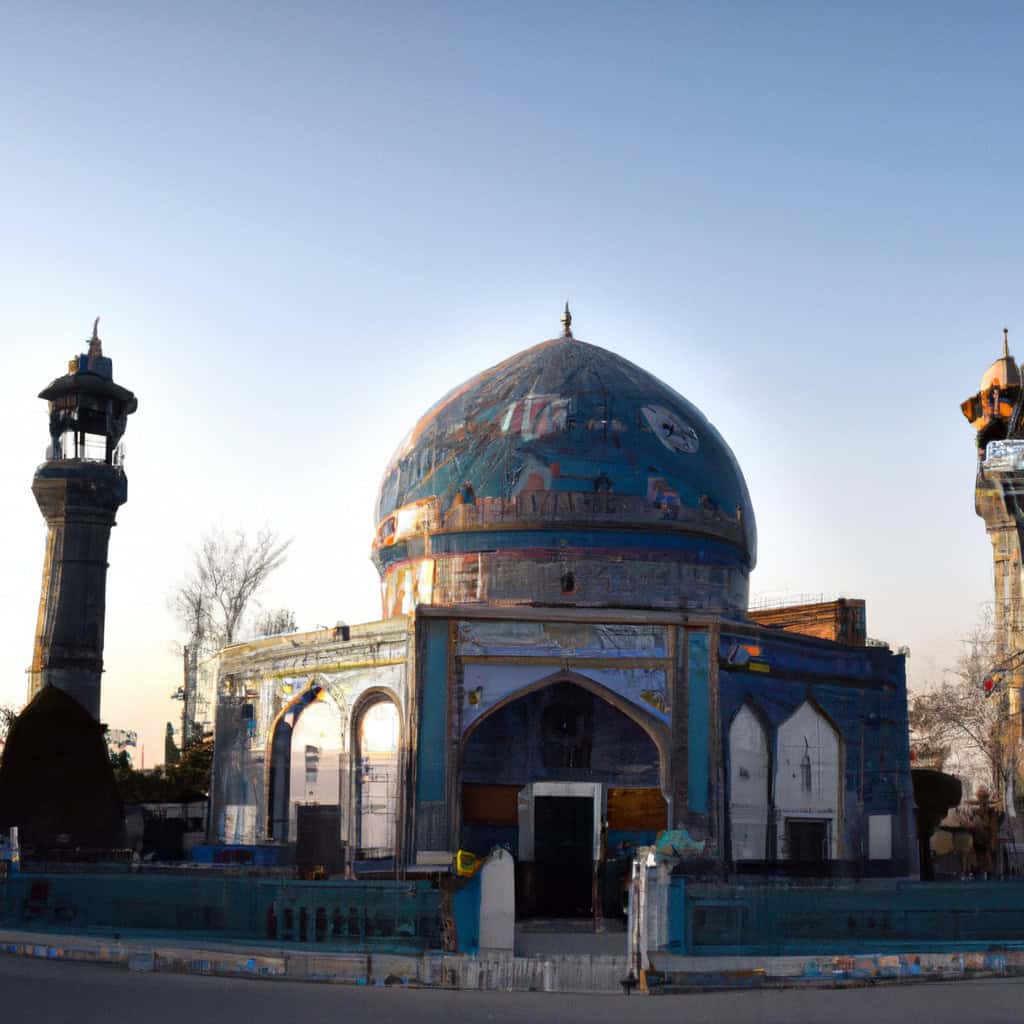Baba Sahib Shrine in Jalalabad, is one of many fascinating sites that both foreign visitors and local tourists can explore while they visit Afghanistan and exploring Nangarhar Province. Steeped in mystery and antiquity, the Baba Sahib Shrine, also known as Hazrat Ali Mazar, astounds its visitors with its strong spiritual energy and elegant architecture. This monumental site serves as a beacon of history and culture that illustrates the richness of Afghan society. It is much more than a mere historical site; it’s a symbol of a vibrant past and the enduring spirit of the Afghan people. Echoing the chorus of their rich historical and cultural narrative, the Baba Sahib Shrine tells a story that’s timeless, and deeply resonates.
Baba Sahib Shrine Most Important Events
- The Construction of the Shrine: The most impactful historical moment at Baba Sahib Shrine would be its initial construction, which dates back to the 12th century. This marks the beginning of its enduring place in Afghan culture and history.
- The Pilgrimage Boom of the 19th Century: The 19th century saw a significant increase in the number of pilgrims visiting the Shrine, making it a centerpiece of Sufi devotion in the region. This boom further established its status, shaping its history and legacy.
- Safeguarding During the Afghan War: Despite the conflicts and wars that shaped Afghanistan’s modern history, the Shrine remained a respected and well-looked-after place of worship. This has significantly contributed to the perseverance of its cultural identity and legacy.
History of Baba Sahib Shrine in Jalalabad
Baba Sahib Shrine, a testament of centuries-old craftsmanship, was constructed during the 12th century under the patronage of a local potentate. Known for its intricate design and architectural excellence, the shrine draws inspiration from Persian and Central Asian architecture.
For a period, the shrine served as the heart of spiritual enlightenment and ethical teachings in the province. Its influence grew, and during the 19th century, it became the epicenter of Sufism in the region. Thousands of devotees from different corners of the country flocked to the Shrine, leaving an everlasting mark in the annals of its history.
The Shrine witnessed the crests and troughs of Afghan history during wars and conflicts. However, followers of Baba Sahib remained devoted, ensuring the preservation of this treasured site. Their dedication offers a telling commentary about the cultural resilience of Afghan society.
Why It’s Important to Afghan History
The Baba Sahib Shrine is not just a religious site; it’s a living piece of Afghan history. It personifies the country’s cultural evolution from the 12th century onwards, offering a window into the spiritual and artistic life of the region.
Its importance can be attributed to its symbolism of unity and peace amidst a turbulent history. Despite the disruptions of wars and conflicts, the Shrine remained a constant, embodying the spirit of resilience and unity amongst the Afghan people.
Why to Visit Baba Sahib Shrine
The Baba Sahib Shrine is a traveler’s delight, boasting of architectural grandeur, tranquil surroundings, and soul-enriching experiences. The intricacy of the architecture, marked by fascinating mosaics and carvings, reflects the mastery of craftsmen of yore. The Shrine’s serene atmosphere and lush, verdant surroundings further enhance its appeal.
Visiting Baba Sahib Shrine is more than just a sightseeing activity; it’s an immersive journey. It provides an intimate encounter with the rich spiritual and cultural life of Afghan society. It gives one a peek into the values of peace, unity, and resilience deeply embedded in Afghan society.
- Witness the impressive architecture of the shrine
- Experience the peaceful ambiance that surrounds it
- Take part in the religious rituals and practices
- Take in the panoramic views of the Afghan countryside
- Interact with the local population and learn about their culture
The shrine is situated in a calm countryside setting in the Jalalabad city. Although accessible throughout the year, the best time to visit is during the milder months of spring and fall. It is recommended to respect local customs and religious practices while visiting.
Cultural & Tourist Significance
Apart from holding immense religious significance to the people of Afghanistan, the Baba Sahib Shrine is also an important part of Afghan culture and tourism. It represents the cultural and artistic prowess of historical Afghan architects, portraying their mastery over intricate designs.
For tourists, the Shrine offers an enriching experience of Afghan history, culture, and spirituality. It provides an opportunity to engage in local customs and to gain insights into Afghan society that go beyond popular narratives.
Lastly, its role in promoting tourism in the troubled region cannot be understated. It attracts thousands of tourists annually, speaking volumes about its charm and allure.
Interesting Facts
Like any historical monument, the Baba Sahib Shrine is shrouded in mystery and lore. There are local legends that attribute miraculous events to the Shrine. Some say that during troubled times, a mysterious light has been seen emanating from the Shrine, symbolizing hope and peace.
It is also believed that the Shrine houses a secret passage that leads to an undiscovered treasure. This is a tale whispered among local historians. However, the real treasure the Shrine possesses is its cultural and historical legacy.
Lastly, it is widely believed that prayers made with a pure heart at the Shrine are said to come true. This belief draws thousands of devotees every year, and is a testament to the spiritual aura that envelopes the Baba Sahib Shrine.


